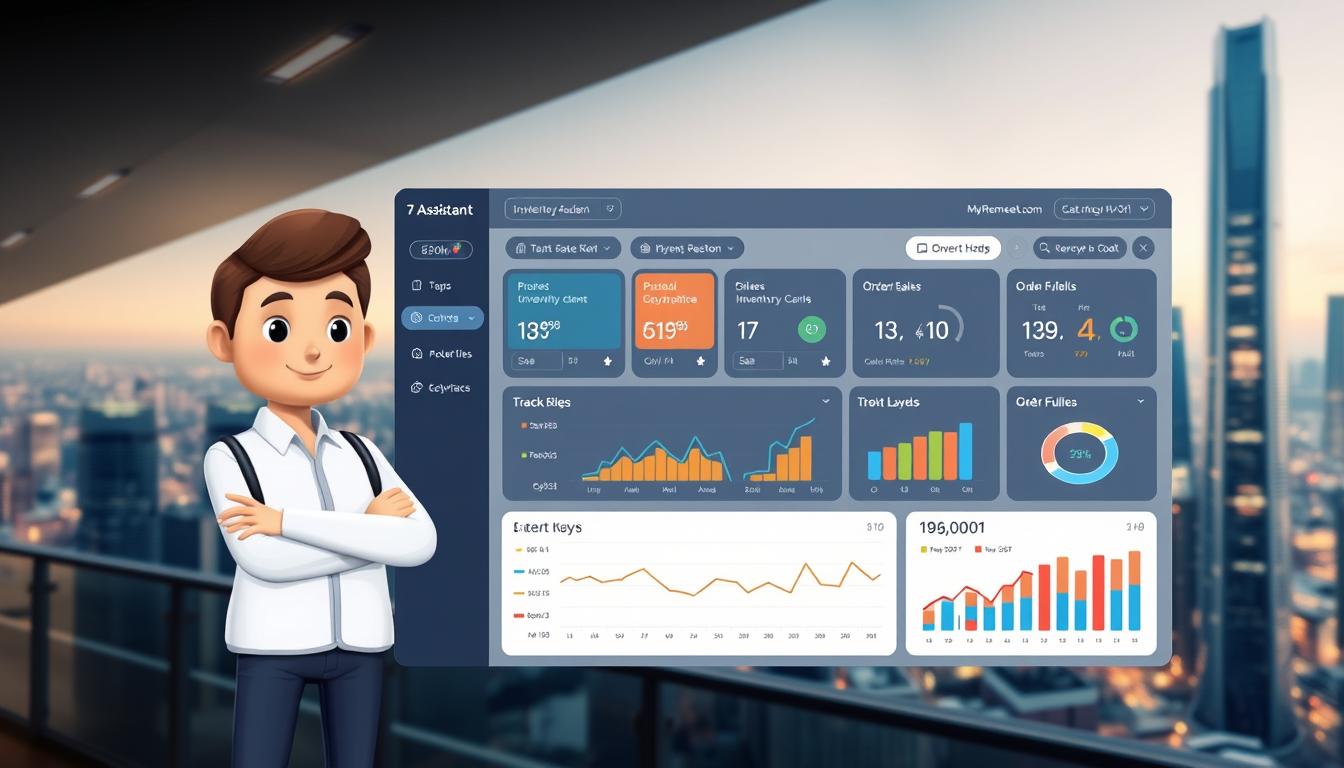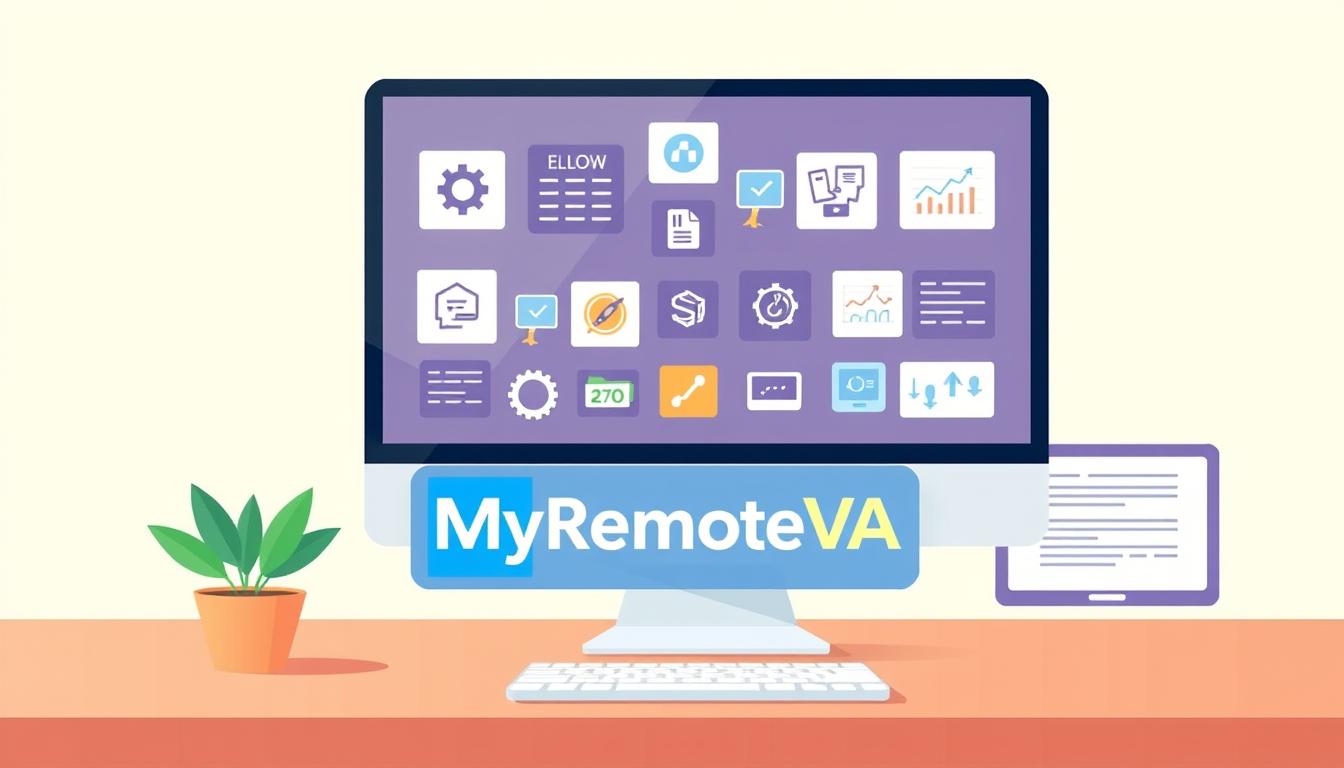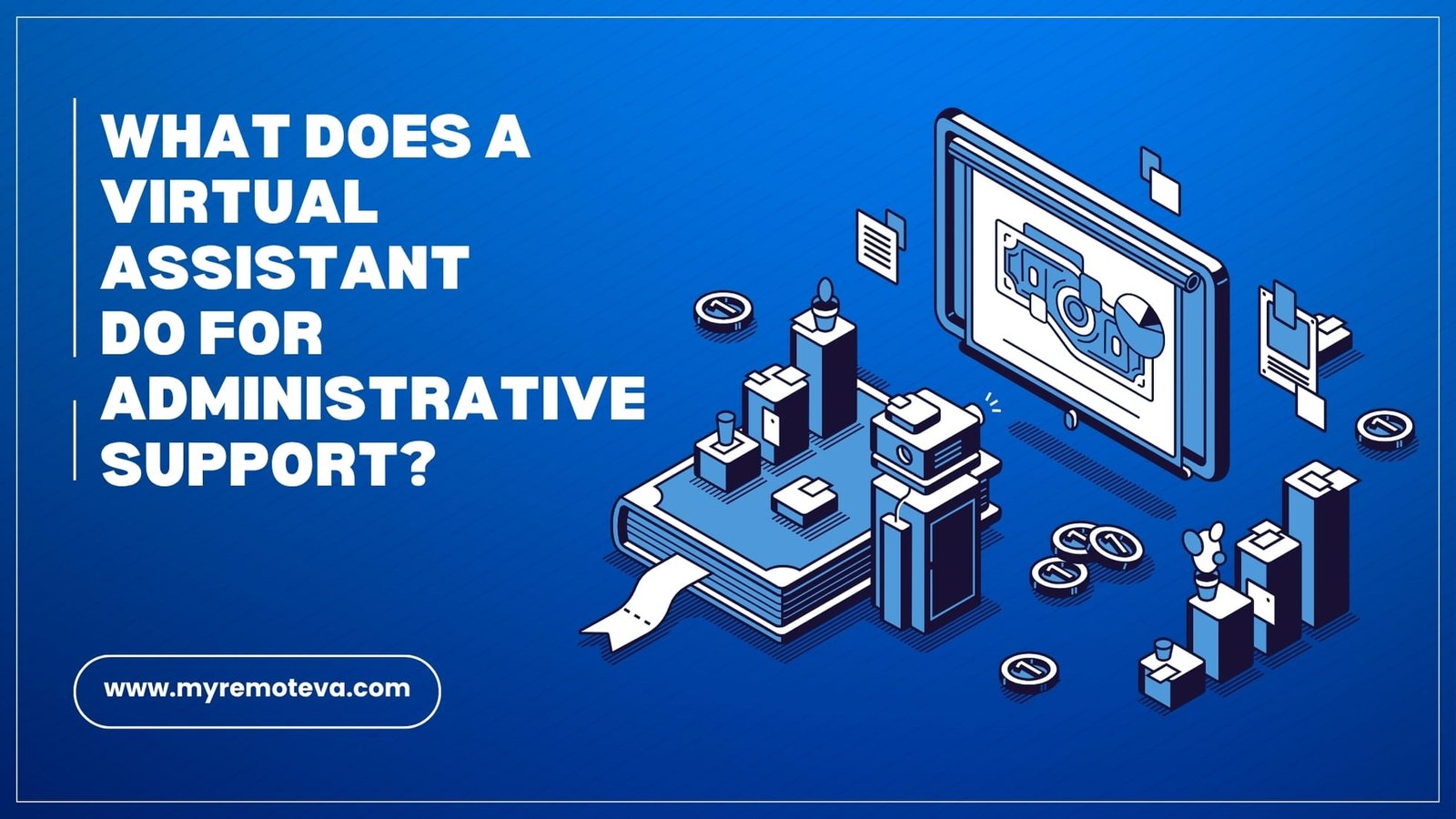What Does a Remote Assistant Do? A Comprehensive Overview
A remote assistant, also known as a virtual assistant (VA), provides administrative, technical, or creative assistance to clients from a remote location. They essentially act as a personal assistant, but without being physically present in the client’s office. The specific tasks a remote assistant handles can vary widely depending on the client’s needs and the VA’s skillset. Think of them as providing expert virtual assistant support for startups, founders, agencies, and busy professionals by handling the tasks they no longer have time for.
Core Responsibilities of a Remote Assistant
The breadth of services offered by remote assistants is vast. Here are some common areas where they provide support:
- Administrative Tasks: This can include managing schedules, booking appointments, making travel arrangements, handling correspondence (emails, letters), data entry, and creating presentations. These are crucial in maintaining daily operations.
- Technical Support: Some remote assistants specialize in technical tasks such as website maintenance, social media management, basic IT support, and managing online databases.
- Customer Support: Responding to customer inquiries via email, chat, or phone, providing product information, and resolving customer complaints are common tasks.
- Marketing Assistance: This could involve creating and scheduling social media posts, managing email marketing campaigns, conducting market research, and assisting with content creation.
- Creative Tasks: Depending on their skills, a remote assistant might help with graphic design, content writing, video editing, and other creative projects.
- Executive Support: This can involve managing communication between different departments, preparing reports, conducting research for projects, and handling confidential information.
Flexibility and Scalability
One of the key benefits of using a remote assistant is the flexibility it offers. Clients can delegate specific tasks or projects on an as-needed basis, paying only for the time or services they actually use. This contrasts with hiring a full-time employee, where fixed costs are incurred regardless of workload. Furthermore, you can delegate admin, tech, customer support, marketing, creative tasks, or executive work. Dedicated Supervisors can manage the VA shift, processes, and reporting so you don’t have to.
Pricing and Plans
Remote assistant services often come in a variety of plans. These include Hourly Monthly Plans that give you a set number of hours per month, e.g. 5, 10, 20 or 30 hours. Or Dedicated Plans, which are better if you need consistent support, like 80 hours or 160 hours per month.
Introduction to Remote Assistants
In today’s fast-paced world, efficiency and productivity are paramount. Remote assistants are becoming increasingly valuable, offering a flexible and cost-effective solution to manage workloads and reclaim precious time. But what exactly does a remote assistant do?
Essentially, a remote assistant provides administrative, technical, or creative assistance from a remote location. They handle a wide variety of tasks, freeing up individuals and teams to focus on core business activities and strategic initiatives. This can translate to increased revenue, reduced stress, and improved work-life balance.
The Scope of Remote Assistant Services
The tasks a remote assistant can handle are incredibly diverse. Think of it as delegating any task that doesn’t require your physical presence. Here’s a glimpse into the possibilities:
- Administrative Tasks: Calendar management, email handling, data entry, travel arrangements, and general office support.
- Technical Tasks: Website maintenance, social media management, basic IT support, and software troubleshooting.
- Customer Support: Responding to customer inquiries, managing online reviews, and providing product support.
- Marketing & Creative Tasks: Content creation (blog posts, social media updates), graphic design, and marketing campaign support.
- Executive Assistance: Managing executive schedules, preparing presentations, and conducting research.
The beauty of using a remote assistant lies in its scalability and flexibility. Whether you need a few hours of support each week or a dedicated team to handle specific projects, you can tailor the service to your exact requirements.
For example, some services offer curated hourly monthly plans, allowing you to access assistance for a set number of hours each month. Others provide dedicated plans where you can secure a virtual assistant for a specified block of time, like 80 or 160 hours per month. This model provides consistent, reliable support for ongoing tasks and projects.
Core Responsibilities of a Remote Assistant
A remote assistant’s responsibilities are diverse and depend heavily on the needs of the client. Essentially, they provide support from a remote location, handling tasks that free up the client’s time to focus on more strategic or revenue-generating activities.
Administrative Tasks
Many remote assistants handle administrative duties, which might include:
- Managing calendars and scheduling appointments
- Handling email correspondence and filtering inquiries
- Data entry and organization
- Preparing reports and presentations
- Making travel arrangements
Technical Support
Some remote assistants possess technical skills, allowing them to assist with:
- Website maintenance and updates
- Basic troubleshooting of technical issues
- Social media management
- Creating and managing online documents
Customer Support
Remote assistants can also play a crucial role in customer service:
- Responding to customer inquiries via email, chat, or phone
- Providing product or service information
- Resolving customer complaints
- Processing orders and returns
Marketing & Creative Tasks
Depending on their skillset, a remote assistant can support marketing and creative efforts:
- Creating social media content
- Drafting blog posts or articles
- Designing simple graphics
- Conducting market research
Executive Support
For executives, remote assistants can provide a higher level of support, including:
- Managing complex projects
- Conducting research and preparing briefs
- Handling confidential information
- Acting as a liaison between the executive and other parties
The key benefit of using a remote assistant is flexibility. Whether it’s administrative, technical, or creative work, delegating tasks allows businesses and individuals to focus on their core competencies and achieve greater productivity. With curated Hourly Monthly Plans (5, 10, 20, 30 hours) or build a team with Dedicated Plans, for 80 hours, or for 160 hours, or multi-VA setups. It caters to different needs from individual support to building your own virtual team.
Benefits of Hiring a Remote Assistant
Hiring a remote assistant can offer a wide array of benefits for startups, founders, busy professionals, and even agencies. By delegating tasks, you can free up your time to focus on more strategic and high-impact activities, ultimately leading to increased productivity and business growth.
Increased Productivity and Efficiency
One of the most significant advantages is the immediate boost in productivity. A remote assistant can handle administrative tasks, customer support inquiries, marketing activities, and even creative projects, allowing you and your team to concentrate on core business functions. Imagine no longer being bogged down by scheduling appointments, managing emails, or handling data entry. Delegating these tasks to a remote assistant frees your time to focus on revenue-generating activities and strategic decision-making.
Cost Savings
Employing a remote assistant often translates to significant cost savings compared to hiring a full-time employee. You eliminate expenses associated with office space, equipment, benefits, and payroll taxes. With flexible hourly and team-based plans, you can choose a plan that perfectly aligns with your budget and needs.
Access to a Wide Range of Skills
Remote assistants can possess a diverse skill set, from administrative support and customer service to technical expertise and creative talents. This allows you to access specialized skills on an as-needed basis without the commitment of hiring multiple full-time employees. For example, you can delegate tech tasks, such as website maintenance or data analysis, to a remote assistant with the necessary expertise.
Improved Work-Life Balance
By offloading tasks to a remote assistant, you can achieve a better work-life balance. Less time spent on administrative duties means more time for personal pursuits, leading to reduced stress and improved overall well-being. This improved work-life balance can also positively impact your productivity and creativity in the long run.
Scalability and Flexibility
Remote assistant services offer scalability and flexibility to adapt to your changing business needs. Whether you need support for a few hours a week or a full-time team, you can easily adjust your plan to match your current workload. This adaptability is particularly beneficial for startups and growing businesses with fluctuating demands.
Choosing the Right Remote Assistant
Finding the perfect remote assistant can significantly boost your productivity and free up your time to focus on strategic initiatives. However, with a variety of options available, it’s crucial to carefully consider your needs and choose an assistant whose skills and experience align with your requirements.
Assess Your Needs
Before you begin your search, take some time to identify the tasks you want to delegate. This will help you determine the specific skills and experience you need in a remote assistant. Consider the following questions:
- What tasks are taking up most of my time?
- Which tasks do I dislike or lack the expertise to handle efficiently?
- What are my priorities for the next few months?
- What is my budget for remote assistant services?
Common tasks delegated to remote assistants include administrative support (managing calendars, scheduling appointments, data entry), technical assistance (website maintenance, troubleshooting), customer support (responding to inquiries, resolving issues), marketing tasks (social media management, content creation), creative work (graphic design, video editing), and executive support (research, travel arrangements).
Consider Different Service Models
Remote assistant services often come in various models, each with its own advantages. Some providers offer curated hourly monthly plans, allowing you to purchase a specific number of hours per month (e.g., 5, 10, 20, or 30 hours). This can be a good option if your needs fluctuate or you’re unsure how many hours you’ll need. Others offer dedicated plans, where you have a dedicated assistant working a set number of hours per week (e.g., 80 hours or 160 hours). These plans are suitable for more consistent and demanding workloads.
Evaluate Skills and Experience
Once you’ve identified your needs and preferred service model, it’s time to evaluate potential candidates or providers. Look for assistants with the specific skills and experience required for your tasks. Check their portfolios or ask for work samples to assess the quality of their work. Also, consider their communication skills, responsiveness, and attention to detail.
Prioritize Communication and Management
Effective communication is essential for a successful working relationship with a remote assistant. Ensure the provider has clear communication channels and processes in place. It’s also beneficial if the provider offers a dedicated supervisor to manage the assistant, shifts, processes, and reporting. This can save you time and effort by ensuring tasks are completed efficiently and to your specifications.
FAQ: Frequently Asked Questions About Remote Assistants
What exactly *does* a remote assistant do?
A remote assistant provides administrative, technical, or creative assistance to clients from a remote location. Think of them as a virtual extension of your team, handling tasks that free you up to focus on your core responsibilities.
What kind of tasks can a remote assistant handle?
The range of tasks a remote assistant can handle is quite broad. It often includes:
- Administrative Tasks: Scheduling appointments, managing emails, data entry, creating presentations.
- Technical Tasks: Website maintenance, social media management, basic IT support, managing software.
- Customer Support: Answering customer inquiries, resolving issues, providing support via email or chat.
- Marketing & Creative Tasks: Content creation, social media posting, graphic design, email marketing campaigns.
- Executive Support: Managing travel arrangements, preparing reports, conducting research.
How is a remote assistant different from a traditional in-office assistant?
The primary difference is location. A remote assistant works remotely, typically from their own home or office, communicating with clients through online channels. This offers flexibility and can often be more cost-effective.
What are the benefits of using a remote assistant?
Utilizing a remote assistant offers several benefits:
- Increased Productivity: Delegate time-consuming tasks and focus on your core business activities.
- Cost Savings: Avoid the costs associated with hiring a full-time employee, such as benefits and office space.
- Flexibility: Scale your support up or down as needed, paying only for the hours you use.
- Access to Specialized Skills: Find a remote assistant with the specific skills and expertise you need for your tasks.
How do I manage a remote assistant effectively?
Effective management involves clear communication, well-defined tasks, and regular check-ins. Setting clear expectations, providing feedback, and using project management tools are all helpful.
How do I choose the right remote assistant?
Consider your specific needs and tasks, and look for a remote assistant with the relevant skills and experience. Check references, ask for samples of their work, and clearly communicate your expectations.
Conclusion
In conclusion, a remote assistant’s role is incredibly diverse and adaptable. They provide administrative, technical, creative, and executive support from a remote location, essentially acting as a virtual extension of your team. The tasks they handle can range from scheduling appointments and managing emails to creating marketing materials and providing customer support.
The specific duties of a remote assistant depend entirely on the needs of the client or organization they serve. Their flexibility allows startups, founders, agencies, and busy professionals to delegate tasks effectively, freeing up valuable time and resources to focus on core business activities. They can handle a broad spectrum of responsibilities, including:
- Administrative Tasks: Managing schedules, making travel arrangements, handling correspondence, and data entry.
- Technical Support: Website maintenance, social media management, basic IT troubleshooting, and data analysis.
- Customer Support: Answering customer inquiries, resolving complaints, and providing information about products or services.
- Marketing & Creative Tasks: Content creation, social media posting, graphic design, and email marketing campaigns.
- Executive Support: Managing projects, conducting research, preparing reports, and assisting with presentations.
By leveraging the skills and expertise of a remote assistant, businesses can improve efficiency, reduce operational costs, and achieve greater productivity. Flexible plans, like those offering curated hourly options (5, 10, 20, 30 hours) or dedicated plans (80 hours, 160 hours, or multi-VA setups), allow organizations to tailor their support to specific requirements and budget constraints. Some companies also offer free introductory options, providing a risk-free way to experience the benefits of remote assistance.














